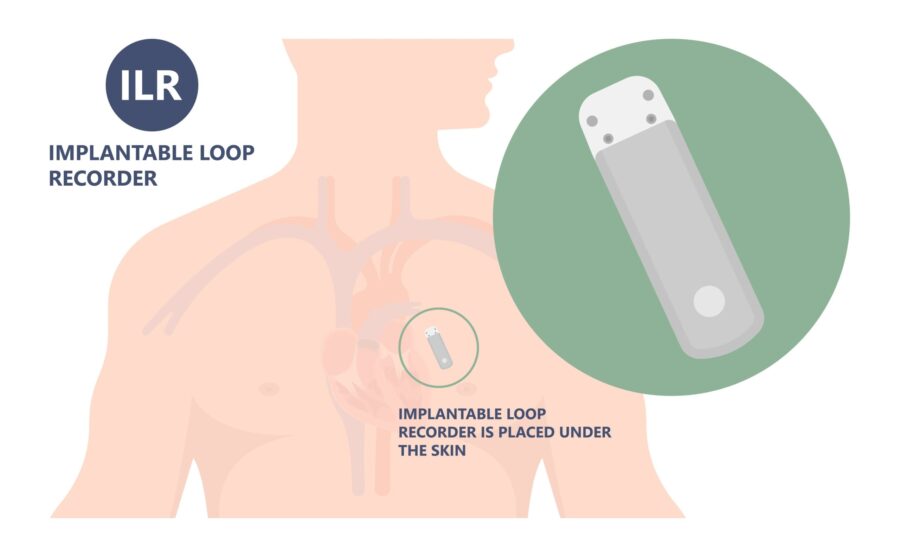Implantable Loop Recorders (ILRs) are small, battery-operated devices implanted just beneath the skin of the chest. They continuously monitor the heart’s electrical activity and record data related to heart rhythms for an extended period, typically up to three years or more. ILRs play a vital role in diagnosing and managing arrhythmias, making them valuable tools in modern cardiology.
Understanding Implantable Loop Recorders:
Implantable Loop Recorders, also known as insertable cardiac monitors or cardiac event recorders, continuously monitor the heart’s electrical activity. They accurately diagnose arrhythmias, assess heart function, and identify abnormalities, enhancing patient care.
The Significance of Implantable Loop Recorders:
ILRs serve several essential purposes in cardiology:
1. Diagnosing Arrhythmias: ILRs effectively capture intermittent symptoms, such as palpitations and dizziness, that traditional electrocardiogram (ECG) tests may find challenging to diagnose.
2. Evaluating Unexplained Events: ILRs are particularly useful in cases of unexplained syncope (fainting) or transient loss of consciousness. They can capture arrhythmias responsible for these events, thus providing valuable insights for accurate diagnosis and management.
3. Monitoring Treatment Efficacy: For patients with known arrhythmias or those undergoing anti-arrhythmic treatments, healthcare providers benefit from long-term monitoring with ILRs. They assess treatment effectiveness and guide adjustments to optimize patient outcomes.
4. Risk Stratification in High-Risk Patients: In patients with risk factors for sudden cardiac death or significant heart conditions, ILRs play a crucial role in identifying potentially dangerous arrhythmias early, allowing timely interventions.
Types of Implantable Loop Recorders:
There are several types of ILRs available to cater to patient needs:
1. Single-Channel ILRs: These ILRs continuously record the heart’s electrical signals through a single lead, detecting a wide range of arrhythmias and facilitating standard diagnostic monitoring.
2. Dual-Channel ILRs: Dual-channel ILRs employ two leads for recording, providing enhanced arrhythmia detection and discrimination between different heart rhythms.
3. Wireless and Smartphone-Enabled ILRs: Modern ILRs come with wireless connectivity and smartphone apps, enabling patients to transmit data remotely to their healthcare providers, thereby promoting patient engagement and convenience.
4. MRI-Compatible ILRs: Certain ILRs are designed to be safe for use in patients who may require magnetic resonance imaging (MRI) scans during the monitoring period.
The Implantable Loop Recorder Procedure:
ILR implantation is typically a procedure performed in a hospital or specialized cardiac center by a skilled electrophysiologist or cardiologist. The procedure involves the following steps:
1. Pre-Procedure Preparations:
Before ILR implantation, healthcare providers thoroughly evaluate the patient’s medical history, symptoms, and risk factors. They explain the procedure and expected benefits, addressing any questions or concerns the patient may have.
2. Anesthesia and Incision:
Healthcare providers typically administer local anesthesia to the patient during the procedure, making a small incision just beneath the skin of the chest, typically on the left side.
3. Insertion of the ILR:
The ILR, about the size of a small USB drive, is inserted through the incision and positioned just beneath the skin. Healthcare providers carefully place the device’s electrodes, which detect the heart’s electrical signals, near the heart.
4. Closure and Dressing:
After ensuring proper positioning and function of the ILR, healthcare providers close the incision, applying a sterile dressing to protect it during the initial healing process.
**5. Post-Procedure Monitoring:**
After the implantation, healthcare providers monitor the patient for a short period to ensure there are no immediate complications. Most patients can go home the same day or the following day, depending on the medical facility’s protocols.
6. Follow-Up and Remote Monitoring:
Following the implantation, patients have regular follow-up appointments with their healthcare provider. During these visits, healthcare providers download and analyze ILR data to identify any arrhythmias or significant events. In cases of wireless or smartphone-enabled ILRs, patients can transmit data remotely, reducing the need for in-person visits.
Safety and Considerations:
Implantable Loop Recorders are generally safe and well-tolerated. However, as with any medical procedure, there are potential risks, including infection, bleeding, or device-related complications. Patients are advised to follow post-procedure care instructions and promptly report any unusual symptoms or issues to their healthcare providers.
In Conclusion
Implantable Loop Recorders have become a crucial tool in diagnosing and managing arrhythmias and other heart rhythm disorders. Their ability to continuously monitor the heart’s electrical activity provides valuable information for accurate diagnoses and personalized treatment plans. As advancements in technology continue, ILRs are becoming more sophisticated, offering wireless connectivity and enhancing patient comfort and convenience. With their role in risk stratification, long-term monitoring, and timely interventions, ILRs are instrumental in improving patient outcomes and ensuring better heart health. As medical technology progresses further, the future holds the promise of even more groundbreaking developments, making Implantable Loop Recorders a cornerstone of modern cardiology.









